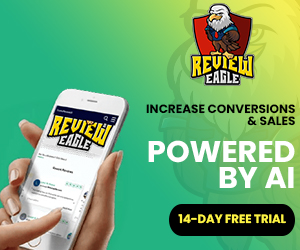To truly stand out online, one must embrace interactive strategies that go beyond traditional content.
In this blog post, we will dive deep into the world of content creation and how interactive strategies can unlock engagement like never before. We’ll explore why interactive content has become the latest buzzword, how it can benefit your business or personal brand, and most importantly, how to effectively incorporate these strategies into your content creation process. But before we delve into the nitty-gritty, let’s take a step back and understand what exactly interactive content is. In simple terms, it’s any type of content that allows the audience to actively participate, engage, and interact with the information being presented. From quizzes and polls to calculators and assessments, the possibilities are endless.
With interactive content, you have the power to captivate your audience, provide value, and leave a lasting impression. So, if you’re ready to take your content creation to the next level and unlock engagement like never before, let’s get started.
Benefits of Incorporating Interactive Strategies in Your Content Creation
Interactive content has revolutionized the way we engage with our audience. Gone are the days of passive consumption, where readers would simply scroll through a blog post or skim an article. With interactive strategies, you have the power to captivate your audience, provide value, and leave a lasting impression. In this section, we will explore the benefits of incorporating interactive strategies in your content creation process.
One of the key benefits of interactive content is increased engagement. When users are actively participating in your content, they are more likely to stay on your page for longer periods of time. This not only increases their exposure to your brand but also improves their overall experience. By incorporating elements such as quizzes, polls, and assessments, you can encourage users to interact with your content and become more invested in what you have to offer.
Another advantage of interactive strategies is improved information retention. Studies have shown that people remember information better when they actively engage with it rather than passively consume it. By presenting information in an interactive format, such as through captivating infographics or immersive virtual tours, you can help your audience retain key messages and concepts more effectively.
Furthermore, interactive content allows for personalized experiences. With tools like calculators or configurators, you can tailor the content to each individual user’s needs and preferences. This not only enhances their engagement but also makes them feel valued and understood by your brand. In addition to these benefits, incorporating interactive strategies can also help drive conversions and generate leads. By integrating forms or gated content within your interactive experiences, you can collect valuable user data that can be used for targeted marketing campaigns or sales follow-ups.
Types of Interactive Content to Consider for Your Audience
Now that we’ve explored the benefits of incorporating interactive strategies into your content creation process let’s take a look at some popular types of interactive content that you can consider for engaging your audience.1. Quizzes and Polls: Quizzes and polls are a great way to encourage audience participation and gather valuable insights. You can create quizzes that test your audience’s knowledge or polls that allow them to voice their opinions on relevant topics. Not only do these types of interactive content provide entertainment value, but they also offer an opportunity for you to learn more about your audience’s preferences and interests.2. Calculators and Assessments: Calculators and assessments are highly effective tools for providing personalized experiences to your audience. Whether it’s a mortgage calculator, a fitness assessment, or a personality quiz, these interactive elements allow users to input their own data and receive customized results. This not only engages your audience but also positions you as an authority in your field by providing them with valuable insights.3. Virtual Tours: Virtual tours have gained popularity in recent years, especially in industries such as real estate, travel, and hospitality. By offering virtual tours of properties, destinations, or venues, you can provide an immersive experience that allows users to explore the space from the comfort of their own homes. This type of interactive content not only engages your audience but also helps them make more informed decisions.
Captivating Infographics: Presenting Information Visually
In today’s fast-paced world, capturing your audience’s attention is more challenging than ever before. With information overload at every turn, it’s crucial to present information in a visually appealing and easily digestible format. That’s where captivating infographics come into play. Infographics are graphic visual representations of information or data that aim to simplify complex concepts and make them more accessible to the audience. By combining text, images, charts, graphs, and icons into one cohesive design, infographics can effectively convey key messages in a concise yet engaging manner.The rise of interactive content has given infographics a new dimension. Now you can create interactive infographics that allow users to explore different sections or interact with specific data points. This not only enhances user engagement but also provides a more immersive and interactive experience.Interactive infographics can be used in various ways, such as:
1. Data Visualization: Interactive infographics can bring data to life by allowing users to interact with charts, graphs, and other visual representations. Users can hover over data points for more information or adjust filters to view specific subsets of data. This not only makes the information more engaging but also helps users understand complex data sets more easily.
2. Step-by-Step Guides: Interactive infographics can be used to create step-by-step guides or tutorials that walk users through a process or explain a concept visually. Users can click on different sections or steps to reveal additional information or animations, making the learning experience more interactive and enjoyable.3. Storytelling: Interactive infographics can be used to tell stories or present narratives in a visually compelling way. Users can navigate through different sections or scroll through the infographic to uncover different parts of the story. This type of interactive content keeps users engaged and encourages them to explore further.
The Rise of Interactive Content: Why It’s the Latest Buzzword
Interactive content has been gaining momentum in recent years, and for good reason. It offers numerous benefits that traditional static content simply cannot match. In this section, we will explore why interactive content has become the latest buzzword in the world of content creation.
One of the main reasons why interactive content is so popular is its ability to grab attention and stand out from the crowd. With so much content being produced every day, it’s essential to find ways to differentiate yourself and capture your audience’s interest. By incorporating interactive elements into your content, you can create a unique and memorable experience that sets you apart from your competitors.
Furthermore, interactive content fosters a sense of connection between brands and their audience. By encouraging active participation and engagement, brands can build stronger relationships with their customers and establish themselves as trusted authorities in their respective industries. This increased engagement can lead to higher brand loyalty, repeat business, and positive word-of-mouth recommendations.
Another reason why interactive content is gaining popularity is its ability to generate valuable data and insights. By tracking user interactions and behaviors within interactive experiences, brands can gather valuable information about their audience’s preferences, interests, and pain points. This data can then be used to inform future content strategies, product development decisions, and marketing campaigns.
Additionally, interactive content has proven to be highly shareable on social media platforms. People are more likely to share content that they find engaging and entertaining with their networks. By creating interactive experiences that are not only informative but also fun and interactive, brands can increase their reach and exposure through social sharing.
Incorporating interactive strategies into your content creation process offers numerous benefits such as increased engagement, improved information retention, personalized experiences, conversions and lead generation. Types of interactive content you can consider for engaging your audience include quizzes and polls, calculators and assessments, virtual tours. Captivating infographics are a great way to present information visually while the rise of interactive content has become the latest buzzword due to its ability to grab attention, foster connection with the audience, generate valuable data insights and be highly shareable on social media platforms.
The AI Web Agency is dedicated to helping our clients grow their business. Growth is the DNA and foundation of our focus in everything we provide to our clients. The AI Web Agency offers marketing services that make our client’s phones ring, their websites fill with visitors, and keeps their existing clients engaged. We deliver this growth both online and offline, to local businesses and national brands. We leverage the power of AI to provide precision personalized content delivered via Email, Web, and Social Media to help businesses grow.









